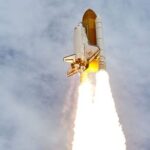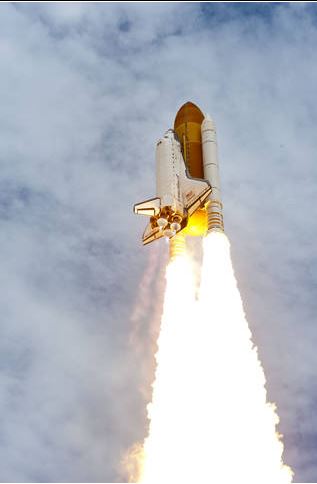2011
2011 – Russian Space Station – Snapshot
In June 2009, Roscosmos informed the United States of its intention to develop an orbital research facility by the time the ISS is retired. This complex would be known as the Orbital Piloted Assembly and Experiment Complex (OPSEK). The Russian Multipurpose Laboratory Module and Node Module are expected to dock with the ISS in 2012, but whenever the decommissioning of the ISS occurs, Roscosmos intends to detach those modules to use as the basis for OPSEK.
2011 – Indian Government Space Budget – Snapshot
For FY 2011, covering April 2011 to March 2012, the combined budgets of India’s Department of Space (DOS)—which includes funding for the Indian Space Research Organisation (ISRO) and the Ministry of Earth Sciences’ Satellite Services program—totaled ## billion rupees (US$## billion), an increase of ##% from the amount planned in the previous fiscal year.[
2011 – Commercial Infrastructure and Support Industries Snapshot
Revenue for commercial space infrastructure, which includes satellite manufacturing, launch services, space stations, ground stations, and associated equipment, totaled $## billion in 2011. Information regarding government spending on space infrastructure can be found in the Government Space Budgets section.
2011 – Japanese Space Industry Employment – Snapshot
According to the Society of Japanese Aerospace Companies (SJAC), Japanese private-sector space employment has averaged 6,380 jobs over the past decade. The number of Japanese private-sector space jobs was highest in FY 2001, at 6,871 jobs, and has oscillated up or down from the ten-year average by no more than 8% in each of the following years, with the exception of FY 2008.
2011 – Economy Snapshot
The global space industry showed very strong growth in 2011, increasing more than ##% from 2010. Commercial space revenue and government budgets reached a record total of $## billion in 2011. This follows a trend of continuing expansion in the global space economy, demonstrating a five-year growth rate of ##% from $## billion in 2006, with the largest growth registered in commercial infrastructure and support industries.
2011 – Ground Networks – Snapshot
Earth observation satellites produce the largest amounts of data to be transmitted to Earth on a regular basis and thus require dedicated data processing ground stations. While all satellites require ground stations to keep track of them and relay commands, Earth observation satellites are specifically intended to gather large amounts of data through a variety of sensors and then transmit that data back down for interpretation and storage.
2011 – European Space Agency Employment – Snapshot
As of June 2011, the European Space Agency (ESA) directly employed 2,251 people, and another 2,000 people worked on-site as contractors. More than half of ESA’s employees were engineers and an additional 138 were astronauts and scientists. The remaining 913 employees, comprising about 41% of the total ESA workforce, held administrative or managerial roles.
2011 – Space Technology Hall of Fame and Space Certification Inductees Snapshot
The Hall of Fame 2011 inductees were commercial ## satellites and ##. For commercial ## satellites, the award was presented to two of the leading companies in this sector, ## and ##. The award recognized that geospatial technology from these satellites has improved national security, logistics and navigation, mapping, disaster tracking, and other important applications.
Launch Log, 2011


Interested in global space launch vehicle satellite activity? Please select the associated link to read about it. Launch data is updated every day during weekdays, excluding U.S. holidays.